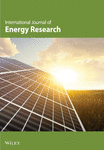Comparative study of flame structures and NOx emission characteristics in fuel injection recirculation and fuel gas recirculation combustion system
Abstract
A numerical study with momentum-balanced boundary conditions has been conducted to grasp the chemical effects of added CO2 to fuel- and oxidizer-sides on flame structure and NO emission behaviour in H2–O2 diffusion flames with varying flame location. A reaction mechanism is proposed to show better agreements with experimental results in CO2-added hydrogen flames.
Oxidizer-side dilution results in significantly higher flame temperatures and NO emission. Flame location is dramatically changed due to high diffusivity of hydrogen according to variation of the composition of fuel- and oxidizer-sides. This affects flame structure and NO emission considerably especially the chemical effects of added CO2. The present work also displays separately thermal contribution and prompt NO emission due to the chemical effects caused by thermal dissociation of added CO2 in NO emission behaviour. It is found that flame temperature and the flame location affect the contribution of thermal and prompt NO due to chemical effects considerably in NO emission behaviour. Copyright © 2004 John Wiley & Sons, Ltd.




